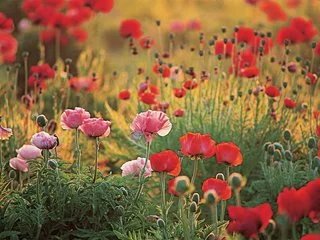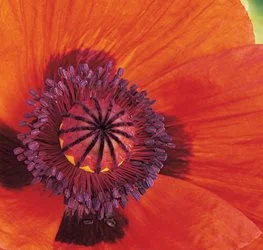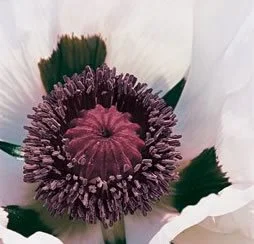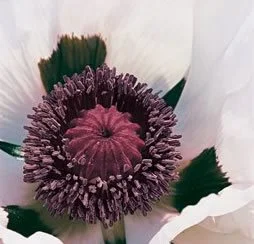Germination Process
Commence the germination process by sowing the seeds directly into the prepared soil or starting them indoors, depending on your climate. Ensure a consistent moisture level during the germination period, typically 10 to 15 days. Adequate spacing between seeds promotes healthier growth, preventing overcrowding.
Providing Adequate Sunlight
Poppies are sun-loving plants, thriving in full sunlight. Choose a location in your garden that receives at least 6 to 8 hours of direct sunlight daily. This ensures robust growth and vibrant blossoms, enhancing the visual appeal of your poppy garden.

Watering Strategies
Balanced watering is crucial for poppy cultivation. While these flowers appreciate regular moisture, they are susceptible to root rot in waterlogged conditions. Implement a schedule that allows the soil to dry slightly between watering sessions, preventing any water-related issues.
Fertilizing for Optimal Growth

Maintaining the fertility of the soil is pivotal for sustained poppy growth. Apply a balanced, all-purpose fertilizer during the growing season, following the package instructions for appropriate dosage. Supplementing with phosphorus-rich fertilizer aids in prolific flower production.
Dealing with Common Pests and Diseases
Poppies may encounter pests such as aphids or diseases like powdery mildew. Regular inspection and prompt intervention are key to preventing these issues from escalating. Organic remedies, like neem oil for pests and a baking soda solution for mildew, offer effective solutions without compromising plant health.
Harvesting Poppies

Harvesting poppies at the right time ensures the preservation of their beauty. Wait until the petals have fully opened before picking them in the morning. Removing spent flowers promotes continuous blooming, extending the visual delight in your garden.
Conclusion
In conclusion, successfully cultivating and nurturing poppies from seeds involves meticulous planning and execution. By following the guidelines outlined in this comprehensive guide, you’ll be on your way to a vibrant and flourishing poppy garden. Remember to adapt these recommendations to your specific conditions for optimal results. Happy gardening!
Introduction
Welcome to our comprehensive guide on cultivating and nurturing poppies from seeds. Poppies are not only enchanting flowers but also relatively easy to grow when armed with the right knowledge. In this guide, we’ll delve into the intricacies of poppy cultivation, offering you a step-by-step walkthrough for a successful journey from seed to bloom.
Choosing the Right Poppy Seeds

Selecting the appropriate poppy seeds lays the foundation for a thriving garden. Opt for high-quality seeds from reputable sources, ensuring they align with your climate and soil conditions. Varieties such as Papaver somniferum and Papaver orientale are popular choices, each with its unique characteristics.
Understanding Soil Requirements
Poppies flourish in well-draining soil enriched with organic matter. A loamy soil structure with a slightly alkaline pH between 6.0 and 7.2 provides an ideal environment for these vibrant blooms. Prioritize soil preparation by loosening it to a depth of at least 12 inches and incorporating compost for optimal fertility.
Germination Process
Commence the germination process by sowing the seeds directly into the prepared soil or starting them indoors, depending on your climate. Ensure a consistent moisture level during the germination period, typically 10 to 15 days. Adequate spacing between seeds promotes healthier growth, preventing overcrowding.
Providing Adequate Sunlight
Poppies are sun-loving plants, thriving in full sunlight. Choose a location in your garden that receives at least 6 to 8 hours of direct sunlight daily. This ensures robust growth and vibrant blossoms, enhancing the visual appeal of your poppy garden.
Watering Strategies
Balanced watering is crucial for poppy cultivation. While these flowers appreciate regular moisture, they are susceptible to root rot in waterlogged conditions. Implement a schedule that allows the soil to dry slightly between watering sessions, preventing any water-related issues.
Fertilizing for Optimal Growth
Maintaining the fertility of the soil is pivotal for sustained poppy growth. Apply a balanced, all-purpose fertilizer during the growing season, following the package instructions for appropriate dosage. Supplementing with phosphorus-rich fertilizer aids in prolific flower production.
Dealing with Common Pests and Diseases
Poppies may encounter pests such as aphids or diseases like powdery mildew. Regular inspection and prompt intervention are key to preventing these issues from escalating. Organic remedies, like neem oil for pests and a baking soda solution for mildew, offer effective solutions without compromising plant health.
Harvesting Poppies
Harvesting poppies at the right time ensures the preservation of their beauty. Wait until the petals have fully opened before picking them in the morning. Removing spent flowers promotes continuous blooming, extending the visual delight in your garden.
Conclusion
In conclusion, successfully cultivating and nurturing poppies from seeds involves meticulous planning and execution. By following the guidelines outlined in this comprehensive guide, you’ll be on your way to a vibrant and flourishing poppy garden. Remember to adapt these recommendations to your specific conditions for optimal results. Happy gardening!
